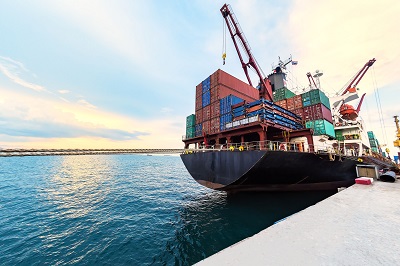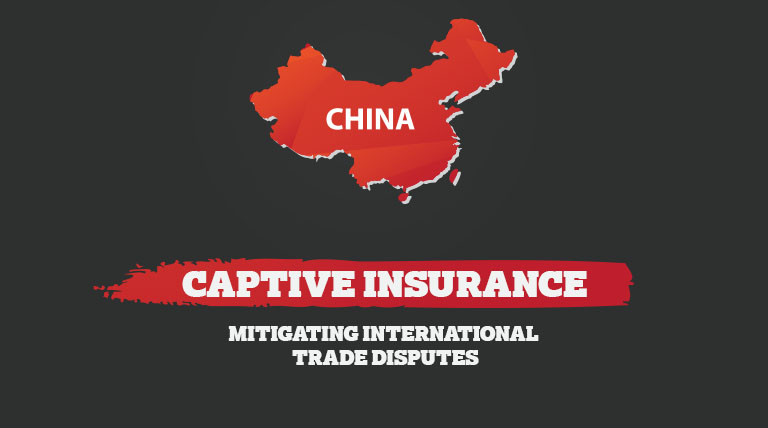Political unrest, trade disputes, and tariffs on U.S. goods--for many, these and other issues can be relegated to ‘sensational’ news stories, where businesses remain in large part, unaffected. But for many others, what can seem far-removed is all too real. In the case of trade disputes between the United States and China, those that buy goods internationally often contend with the effects of political headwinds. During 2019, the potential for supply chain breakdown and more viscerally, a significant slowdown of cash flow became ever more apparent. Tariffs were placed on many imported goods, leaving affected business owners with no good options: accept smaller margins, pass the tariff costs onto customers, or cut costs by moving to U.S.-based suppliers, cutting jobs, or reducing expenses elsewhere. The competitive edge that a company may have once enjoyed was at risk. Bottom line: The status of the relationships the United States has with China and other countries around the globe can have a significant impact on the viability of U.S based businesses. It’s within this context that we explore how the formation of a captive insurance company can provide real financial support in a time of political uncertainty. When governmental decision-making hits home…and business, as it were, savvy business leaders can take action in ensuring their operations remain unscathed.

Leveraging Captive Insurance to Offset Trade Disruptions
It’s important to understand how a captive insurance company can aid businesses with comprehensive risk coverage within the context of Chinese trade disruptions (and international trade disruptions, more generally): In 2019, tensions between the Trump administration and Chinese officials reached a fever pitch – tariffs were being placed on imported goods by both parties and trade relations between the two countries remained uncertain.
Tensions began a year prior when the Trump administration made a fervent call to U.S.-based businesses, strongly urging them to move their operations “home” as part of its “America First” economic policy. The idea was that keeping operations onshore would spur job creation, encourage a more level playing field among American businesses, and promote a healthier economy. The Trump administration placed tariffs on businesses that continued to import raw materials or finished products from China. It was a move that rewarded businesses weren’t dependent on Chinese imports. But it punished organizations that favored the cheaper raw materials and labor costs from the Chinese market. Undoubtedly, the tariffs sent a clear message to businesses that defiance toward the policy would mean heavy strain on their bottom lines and operations…it was a message that they should pay their dues, one way or another.
The solar energy industry was put on notice when President Trump enacted tariffs on imported solar panels. Manufacturers that set up operations in the U.S. from the beginning claimed that businesses importing from China were putting them at a “competitive disadvantage.” As a result of the tariffs, the renewable energy industry went reeling--Asia served as its largest source of solar panel equipment, and now, their supply chain was at risk of breaking down. Solar energy companies would need to pony up or find a new, U.S.-based manufacturer to make their solar panels; which were of course manufactured at a much higher price point.
The Trump administration had another reason to encourage U.S. based businesses to move their operations to the U.S. Chinese officials had been investigated and convicted for intellectual property theft from U.S. manufacturers. Knockoffs of well-known brands like GoPro and New Balance were being sold in plain sight in Chinese malls and all over the world. The National Interest reports that in 2007, Lockheed Martin combatted against a cyber-attack when Chinese hackers stole technical documents related to the development of the F-35 fighter jet. The details on the hack eventually revealed in documents leaked by Edward Snowden, are just one example of Chinese attempts to steal U.S. technology.
The U.S. tariffs on Chinese imported goods were just the beginning – China placed retaliatory tariffs on goods imported from the United States exacerbating tensions. And then the United States retaliated again with further tariffs escalating the dispute to an all-out trade war.
 This is just one example of the risks that businesses contend with when trade disruptions emerge. Lobbying and voting can aid in the creation of laws and policies that don’t punish businesses who trade internationally. But a vote and even a place on the Congress floor cannot always thwart the risk of trade disruption, foreign corruption, or business interruption. Business operations may be interrupted if the business doesn’t have enough cash on hand to pay all of its suppliers as a result of tariffs. If a business owner decides to choose a U.S.-based supplier, there’s a risk of supply chain breakdown in the interim. If the business owner chooses to pass the added cost of the tariffs on to their customers, they may lose some.
This is just one example of the risks that businesses contend with when trade disruptions emerge. Lobbying and voting can aid in the creation of laws and policies that don’t punish businesses who trade internationally. But a vote and even a place on the Congress floor cannot always thwart the risk of trade disruption, foreign corruption, or business interruption. Business operations may be interrupted if the business doesn’t have enough cash on hand to pay all of its suppliers as a result of tariffs. If a business owner decides to choose a U.S.-based supplier, there’s a risk of supply chain breakdown in the interim. If the business owner chooses to pass the added cost of the tariffs on to their customers, they may lose some.
For businesses that trade internationally, they’re exposed to many risks usually not covered by their commercial policies that are tied to U.S. policy and relationships with international trading partners.
However, the formation of a captive insurance company can help manage these risks. Under a captive, businesses (insureds) can underwrite coverages that are specifically tailored to their particular risks. In the case of new tariffs being placed on imported goods, these coverages would allow for business owners to take back some of the control they’ve lost over the sustainability of their organizations.
Specifically, coverages written under a captive can include:
- Trade disruption coverage: Protects the insured for business interruption and extra expenses that result from any event or incident which causes an adverse impact on the insured’s supply chain, in fulfilling insured’s customer requests.
- Trade credit: Coverage that protects the insured when a customer defaults on paying its debt for goods and services rendered.
- Loss of a major supplier: Protects against business interruption and extra expense that would result from the loss of a major supplier while the insured establishes a suitable replacement to resume normal business operations.
- Loss of services: Protects the insured against business interruption that would result from an involuntary loss of services of a covered key person (such as a resignation, extended illness, loss of license, etc. and further coverage for legal expenses involved in employment disputes and intellectual property or non-compete disputes following the loss of services of the covered key person.
As found with many commercial coverages, those addressing trade disruptions are expensive and limited. A captive insurance company could serve as an ideal strategy to cover losses stemming from the U.S. tariffs or other international risk exposure more comprehensively and cost-effectively.
Industries Affected by Chinese Tariffs: A Closer Look
Even with temporary ceasefires and partial deals between the U.S. and China, businesses have been caught in-between, bending to the will of the tariffs when they’re actually in effect. Besides the solar industry mentioned above, there a number of industries that have felt the full brunt of these international trade disputes. Mid-market business owners haven’t been able to rely on commercial insurance coverages to fill in the financial gaps. Consequently, these industries are either losing money or are on the brink of doing so. Forming a captive insurance company allows businesses to withstand political volatility.
 Here are a few industries that could benefit from alternative risk planning by way of a captive:
Here are a few industries that could benefit from alternative risk planning by way of a captive:
Dairy Farmers. The effect of Chinese tariffs on the $620 billion U.S. dairy sector has been immense—specifically, falling milk prices are causing U.S. to lose out to competitors. As of October 2019, 16% of milk products is exported to foreign countries annually, but that number is expected to decrease. Chinese purchasers have begun to seek out other sellers.
Kitchen Cabinet Manufacturers. The U.S. Commerce Department put a 39.2% tariff on imports of Chinese cabinets in August of 2019. Currently, about 250,000 people work in the U.S. in the kitchen cabinet industry.
The speculation is that the Chinese want to acquire all of the market share.
Sports Equipment Manufacturers. Many U.S.-based sporting equipment manufacturers have their operations in China or purchase cheaper raw materials from Chinese plants. With a 38% tariff on these goods as of September of 2019, the economic incentive to keep operations overseas dwindles. But while operations remain, customers pay a markup to fill in the difference.
In summary, mid-market organizations are not powerless when politics and bureaucracy take the place of good business. Captive insurance can be leveraged as a supplemental risk coverage option so that supply chain breakdown and business interruption don’t overshadow financial success and a positive import/export experience.
To learn more, please us a call at WEB_TEL today.




